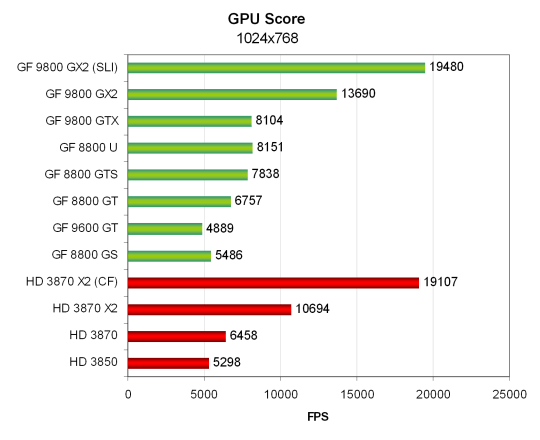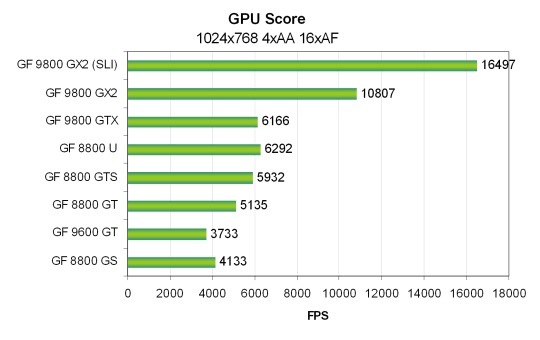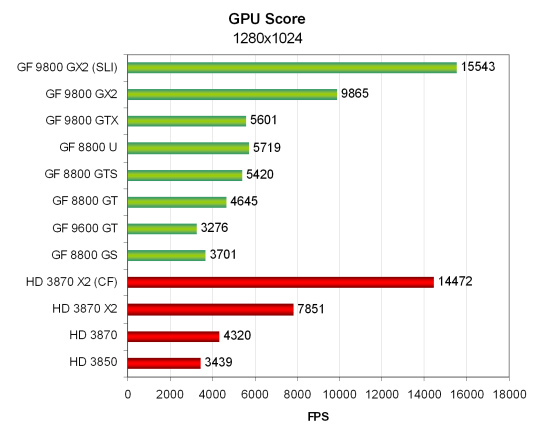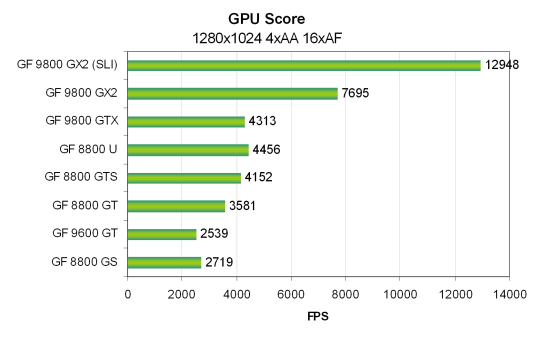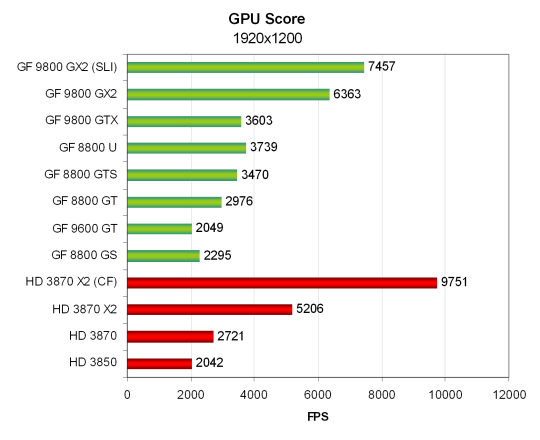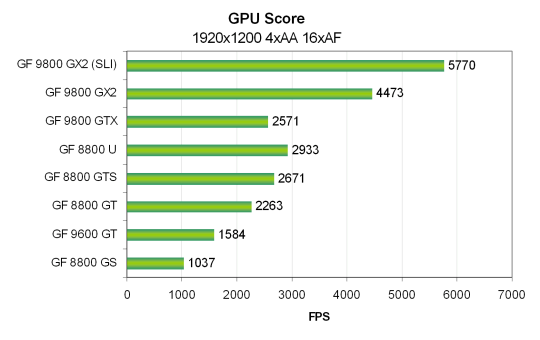Graphics tests
Both tests use the same graphics engine and most of its features, such as post processing effects. However, there are some differences between these tests. The first test renders a large indoor scene with many complex static and dynamic objects, GPU physics computing, cloth simulation and dynamic waves, with multiple light sources. And the second scene shows an open space 3D scene with a great many relatively simple objects and complex post processing.
Pay attention to the lack of test results of graphics cards from AMD in all modes with enabled anti-aliasing and anisotropic filtering on the main testbed. Even though the tests use a special driver for Vantage, all graphics cards based on AMD GPUs failed to pass the tests, freezing in the very beginning of the first graphics test. However, the updated testbed with nForce 790i copes with the tests well, so you will be able to see these results in our coming i3DSpeed. Perhaps, AMD considers Intel more dangerous than NVIDIA, as its graphics card drivers work fine with nForce motherboards and don't work with Intel X38.
We should also keep in mind that the testbed configuration for two GeForce 9800 GX2 operating in Quad SLI mode is different. These test results are published only to get an idea of Quad SLI performance with NVIDIA cards.
We'll analyze tests in the other article. This one is devoted to graphics cards' performance. First of all we'll analyze results obtained in the Extreme mode in all four resolutions with/without anti-aliasing and anisotropic filtering. We'll start with 1024x768:
On the whole, everything is similar to the previous 3DMark06 benchmark. Graphics cards from AMD traditionally perform better in synthetic tests than in real games. For example, judging by these results, RADEON HD 3850 must be noticeably faster than GeForce 9600 GT. But its performance is not that peachy in practice. HD 3870 and its dual-GPU modification are outperformed by GeForce 8800 GT/GTS and GeForce 9800 GX2. However, quad-GPU competitors perform almost on a par. Quad SLI from NVIDIA is apparently not as efficient as the AMD CrossFire system with four GPUs.
The 8800 GS card defeats 9600 GT in both modes. The old 8800 Ultra is faster than even 9800 GTX. The 9800 GX2 shows a good performance level. Perhaps, it's the first semi-synthetic test, where a G94-based card is so heavily outperformed by a G92-based card. Their performance gap is usually smaller. Let's see what will change in the 1280x1024 mode...
There are not many changes here. HD 3850 and HD 3870 are a tad slower than NVIDIA cards, GeForce 9600 GT is still outperformed by the 8800 GS, and the 8800 Ultra card still defeats top new cards based on G92. Let's proceed:
Absolutely the same situation. All graphics cards scale in a similar way. We should mention a higher performance gain from Quad SLI, especially with enabled anti-aliasing. Besides, the 9600 GT card comes closer to the 8800 GS. And the last test resolution:
There are some interesting results here... GeForce 9800 GX2 demonstrates excellent performance, almost a two-fold gain versus a single 8800 GTS. But Quad-GPU with two 9800 GX2 cards apparently fails to reveal its full potential. Perhaps, NVIDIA experiences some problems with SLI in this very screen resolution.
We have also seen an interesting performance drop demonstrated by the 9800 GTX. It performs slower than the 8800 GTS (to say nothing of the 8800 Ultra) with enabled anti-aliasing and anisotropic filtering. We can explain this situation only with driver bugs. And the 8800 GS is outperformed by the 9600 GT apparently because of its relatively low video memory size and 192-bit bus on the 8800 GS.
Write a comment below. No registration needed!

